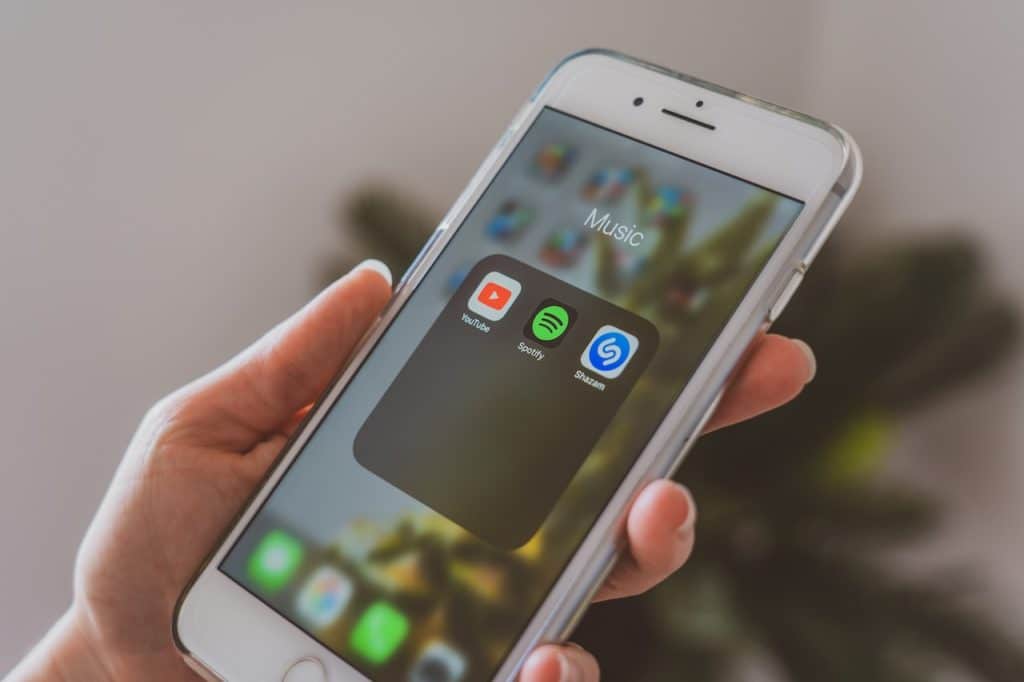From Twitter to Facebook, no matter which K-Pop community you hang out in, sales talk is impossible to avoid. Fans often take pride in how well their favorite group is selling, which means fandoms are often found discussing and bragging about sales figures — both physical and digital.
But what exactly are digital sales? If you’re not sure, you’ve come to the right place! Here’s everything you need to know about digital sales.
Digital sales meaning in K-Pop
In a nutshell: Songs and albums that are downloaded or streamed through online platforms all come under the heading of ‘digital sales’. This contrasts with physical sales: CD albums that come in packaging you can hold. Keep reading to find out where digital sales come from, why they’re important, how much they’re worth in financials and fame, and more.
Digital sales platforms
So, where do digital sales come from? Just like physical albums are sold in different independent, chain, and online stores around the world, digital sales come from a variety of platforms. Some platforms are specific to Korea, while others are worldwide.
Global digital music platforms
Global sales are usually counted by Billboard, the renowned US-based chart that more and more K-Pop idols are striving to reach. International platforms include:
- Apple Music
- Spotify
- Amazon Music
- YouTube Music
- Tidal

Korean digital music platforms
There are also several platforms that only operate in Korea, counting towards charts like Circle and iChart. These come and go, with new platforms entering the market regularly and old ones phasing out. With that being said, the current major Korean sales platforms are:
- Melon
- Genie
- FLO
- VIBE
- Bugs
Former major platforms include Naver, Mnet, and Soribada.
Why are digital sales important?
Unsurprisingly, selling music is still one of the main ways K-Pop groups make money. While music sales will likely never generate as much profit as scoring a brand deal or going on tour, they’re still a crucial part of a group or idol’s trajectory.
If a group doesn’t sell well physically or digitally, they’re likely to get less focus and attention from their company. In turn, this could lead to a serious decline for the group, and possibly even disbandment.
In the past, physical sales had far more weight over digital sales. However, the music industry on the whole is becoming more and more digital-focused. This is especially true in countries like the US, where many K-Pop artists are trying to break ground, but it’s also becoming the standard worldwide too.

By 2016, 50% of all global music revenue was coming from digital downloads and streaming, with just one-third stemming from physical sales. As of 2021, streaming and digital sales now account for almost $30 billion US dollars in revenue worldwide, while physical sales total just $5 billion USD.
With all this in mind, digital sales are more important than ever in determining the success and future of a K-Pop act.
Which is worth more: digital sales or physical sales?
We’ve already established that digital sales bring in more revenue worldwide, but what about on an individual group basis — are they still worth more than physical sales?
The value of digital sales in K-Pop can be split into two categories: financial value and popularity value. There’s also a third category to keep in mind: music shows.
1. Which is worth more financially?
Individually, one digital sales unit brings in less money than one physical sales unit. This is no surprise when you compare album prices: an album may be as little as $5 on iTunes, but is likely to cost upwards of $15 or $20 in physical form.
Digital sales also include streams, which are covered by users’ monthly membership fees for platforms such as Apple Music or Spotify. As an example, Spotify currently pays an estimated $0.0033 USD per stream — just one-third of a cent.
However, bear in mind that since digital sales cost the listener less, they tend to be far higher in number than physical sales. An album that has 100,000 physical album sales, for example, may have tens of millions of song streams on Apple Music. This means digital sales can actually bring in substantial revenue overall.
Take TWICE, for example. In 2021 alone, the group brought in around 1.6 billion streams on Spotify. In total, this amounts to a whopping $5.28 million USD in revenue.

Unlike physical sales, digital sales also have no “overhead” costs, such as printing and packaging. Physical sales may bring in higher revenue per sale, but they’re subject to costs like these, and they’re far lower in number than digital downloads and streams.
With all this in mind, it’s fair to say that physical sales and digital sales are both highly valuable from a financial standpoint today.
2. Which is worth more for popularity?
The answer to this question depends on how you measure popularity: does a popular group have a large fanbase, or do they have high recognition amongst the general public?
A group with high digital sales generally has stronger public recognition and acclaim. Since the public doesn’t have to directly invest in a group to stream or download their music, they’re far more likely to stream a song they like than they are to buy a physical album. As such, groups with high digital sales tend to have more longevity. Take Red Velvet, for example, who continue to chart strongly even in their 8th year.

In contract, physical sales tend to represent a very large or very dedicated fandom, because only fans buy physical albums. Groups with high physical sales may not be able to make music as a group for as long as digital sellers, because fans often age out of their interests and have to spend their money on adult responsibilities. However, these groups tend to peak higher, sell more merchandise, and score more brand deals (especially for the FOTG).
Naturally, the most successful groups (like BTS) have both, which is why they’re able to reach such heights.
3. Which is worth more on music shows?
Digital sales always count for more points on music shows. Here’s how each show determines who wins the trophy:
- M Countdown points index – 45% digital, 15% physical
- Music Bank points index – 60% digital, 5% physical
- Music Core points index – 50% digital, 10% physical
- Inkigayo points index – 55% digital, 10% physical
- The Show points index – 40% digital, 10% physical
- Show Champion points index – 35% digital, 15% physical

This implies that music shows place more weight on public recognition than strong fanbase.
The boy group / girl group divide
Have you ever noticed that boy groups tend to sell more physicals, while girl groups tend to sell more digitals?
Boy groups are able to dominate physical sales because they have much larger fandoms. On average, women fans of K-Pop boy groups are the highest spenders (in comparison to male fans or female girl group fans), so they’re always ready to buy multiple copies of their favourite group’s album.
Some examples of male acts with high physical sales include:
- NCT
- Stray Kids
- EXO’s Baekhyun
Girl groups, on the other hand, often dominate digital sales because their songs are more appealing to the general public. While many of today’s boy groups have a more experimental, heavy sound, popular girl groups tend to make catchier music that appeals to everyone’s taste.
Some examples of female acts with high digital sales include:
- Red Velvet
- IVE
- Girls’ Generation’s Taeyeon
Conclusion
Now you know: Digital downloads and streams are very important for today’s K-Pop groups in a variety of different ways, from earnings to fame. Only time will tell if digitals will continue to increase in importance as the years go by.







